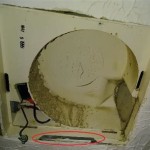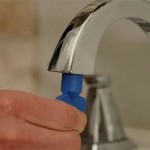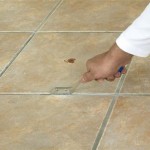How to Change a Bathroom Faucet Sink
Replacing a bathroom faucet sink is a common DIY project that can upgrade the look and functionality of a bathroom. While it might seem daunting initially, with the right tools, careful preparation, and a methodical approach, the process can be manageable for many homeowners. This article outlines the steps involved in changing a bathroom faucet sink, providing a comprehensive guide to ensure a successful installation.
Prior to beginning the project, careful consideration should be given to the replacement faucet. Faucets come in a variety of styles, finishes, and configurations. Selecting a faucet that matches the existing plumbing configuration, such as single-hole, centerset, or widespread, will minimize the need for modifications to the sink or countertop. Additionally, considering the water pressure and flow rate of the new faucet is crucial for optimal performance.
Gathering the necessary tools and materials before starting the project is essential for efficiency. A basin wrench, adjustable wrench, pipe wrench, screwdriver set (both Phillips head and flathead), plumber's tape, putty knife or scraper, safety glasses, and work gloves are typically required. Depending on the existing plumbing and the new faucet, additional items such as a bucket, towels, new supply lines, and plumber’s putty may also be needed.
Step 1: Shut Off the Water Supply and Disconnect Existing Faucet
The first and arguably most important step is to shut off the water supply to the faucet. This is typically done at the shut-off valves located beneath the sink. In older homes, these valves may be corroded or non-functional. If the shut-off valves are seized or leaking, it may be necessary to shut off the main water supply to the house. Before proceeding, it is prudent to test that the water supply is indeed shut off by briefly turning on the existing faucet.
Once the water is turned off, place a bucket under the sink to catch any residual water that may be present in the pipes. Using an adjustable wrench, carefully disconnect the water supply lines from the existing faucet. It is important to note the orientation of the hot and cold water lines for re-installation later. If the supply lines are old or corroded, it is recommended to replace them with new ones during the faucet replacement.
Next, disconnect the drain assembly from the sink. This typically involves loosening a slip nut or drain flange located beneath the sink. Use a pipe wrench or adjustable wrench to loosen the nut and carefully detach the drain assembly. Be prepared for some residual water and debris to drain out during this process.
With the water supply lines and drain assembly disconnected, the existing faucet is ready to be removed from the sink. The faucet is usually secured to the sink with mounting nuts or clips located beneath the sink. In some cases, these nuts may be difficult to reach, requiring the use of a basin wrench. A basin wrench is a specialized tool designed to reach and loosen nuts in tight spaces. Loosen the mounting nuts or clips and carefully lift the faucet from the sink.
After removing the faucet, clean the sink surface thoroughly with a putty knife or scraper to remove any old plumber’s putty or sealant. Ensure the surface is clean and dry before installing the new faucet. Removing any residue will ensure a proper seal for the new faucet, preventing leaks.
Step 2: Install the New Faucet
Before installing the new faucet, carefully read the manufacturer's instructions. Each faucet model may have specific installation requirements. Familiarizing oneself with the instructions beforehand will prevent errors and streamline the installation process.
Most new faucets come with a rubber or silicone gasket that is placed between the faucet base and the sink surface. This gasket provides a watertight seal and prevents leaks. Position the gasket on the faucet base according to the manufacturer's instructions. If the faucet does not come with a gasket, apply a thin bead of plumber’s putty around the base of the faucet.
Carefully insert the faucet into the sink holes, ensuring that it is properly aligned. From beneath the sink, attach the mounting hardware (nuts, washers, and clips) that came with the new faucet. Tighten the mounting hardware securely, but avoid over-tightening, which could damage the sink or faucet. Ensure the faucet is firmly attached to the sink and does not wobble.
Connect the water supply lines to the new faucet. If using the old supply lines, inspect them for wear and tear and replace them if necessary. Apply plumber’s tape to the threads of the faucet inlets before connecting the supply lines. Tighten the supply lines securely with an adjustable wrench, again avoiding over-tightening. Ensure the hot water line is connected to the hot water inlet and the cold water line is connected to the cold water inlet. This is a critical step to avoid functional issues with the faucet after installation.
Install the drain assembly according to the manufacturer's instructions. This typically involves inserting the drain flange into the sink drain opening and securing it with a nut from beneath the sink. Apply plumber’s putty around the drain flange to create a watertight seal. Connect the drain tailpiece to the drain assembly and tighten the slip nuts securely. Ensure all connections are tight and leak-free.
Step 3: Test for Leaks and Ensure Proper Functionality
After the new faucet is installed and all connections are made, it is time to test for leaks and ensure proper functionality. Slowly turn on the water supply at the shut-off valves beneath the sink.
Carefully inspect all connections (supply lines, drain assembly, and faucet base) for any leaks. If any leaks are detected, immediately turn off the water supply and tighten the connections further. If leaks persist, disassemble the connections and reapply plumber’s tape or plumber’s putty as needed.
Once all leaks are eliminated, turn on the faucet and check the water flow and temperature. Ensure that both hot and cold water are flowing properly. Check the drain for proper drainage and ensure there are no clogs or obstructions. Run the water for a few minutes to flush out any debris that may be present in the pipes.
If the faucet has a sprayer attachment, test the sprayer to ensure it is functioning correctly. Check for leaks around the sprayer hose and connections. Adjust the water flow and temperature as needed to suit personal preferences.
With all connections tested and functioning correctly, clean up the work area and remove any tools or materials. Dispose of the old faucet and any packaging materials properly.
Following all these steps carefully can ensure the successful installation of a new bathroom faucet sink. Regular maintenance, such as cleaning the faucet aerator and checking for leaks, can help prolong the life of the faucet and ensure optimal performance.
Choosing a suitable replacement faucet requires careful consideration of design and functionality. It is important to select a faucet that complements the existing bathroom decor while also providing the desired water flow and ease of use. Factors such as the height of the spout, the type of handle, and the finish of the faucet should be taken into account. In addition, consider the reputation and warranty offered by the faucet manufacturer to ensure long-term reliability.
Properly preparing the work area is also crucial for a successful faucet replacement. Cover the countertop and floor with drop cloths or towels to protect them from scratches and spills. Ensure that the area is well-lit to facilitate the installation process. Gather all the necessary tools and materials and keep them within easy reach. A well-organized work area will minimize disruptions and prevent accidents.
When disconnecting the old faucet, exercise caution to avoid damaging the sink or plumbing. Use the appropriate tools and apply gentle pressure to loosen the connections. If any connections are particularly stubborn, try applying penetrating oil to help loosen them. Avoid using excessive force, which could damage the pipes or faucet. If necessary, consult a professional plumber for assistance.
During the installation of the new faucet, ensure that all connections are properly sealed to prevent leaks. Apply plumber’s tape or plumber’s putty to the threads of the connections to create a watertight seal. Tighten the connections securely, but avoid over-tightening, which could damage the pipes or faucet. After the installation is complete, thoroughly inspect all connections for leaks and make any necessary adjustments.
Finally, remember safety measures like wearing safety glasses and gloves during the process to protect the eyes and hands. This can prevent from any injuries caused by debris or harmful chemicals.

Diy How To Replace A Bathroom Sink Faucet Remove Install

How To Replace A Bathroom Faucet Home Repair Tutor

How To Replace A Bathroom Faucet Tinged Blue

How To Remove And Install A Bathroom Faucet

How To Remove And Install A Bathroom Faucet

How Do I Replace Bathroom Sink Faucet Handles Cleaning More

How To Replace A Bathroom Faucet Tinged Blue

How To Remove And Install A Bathroom Faucet

Bathroom Faucet Replacement For Beginners Making Maanita

How To Update Change A Bathroom Faucet Happiness Is Homemade
Related Posts







